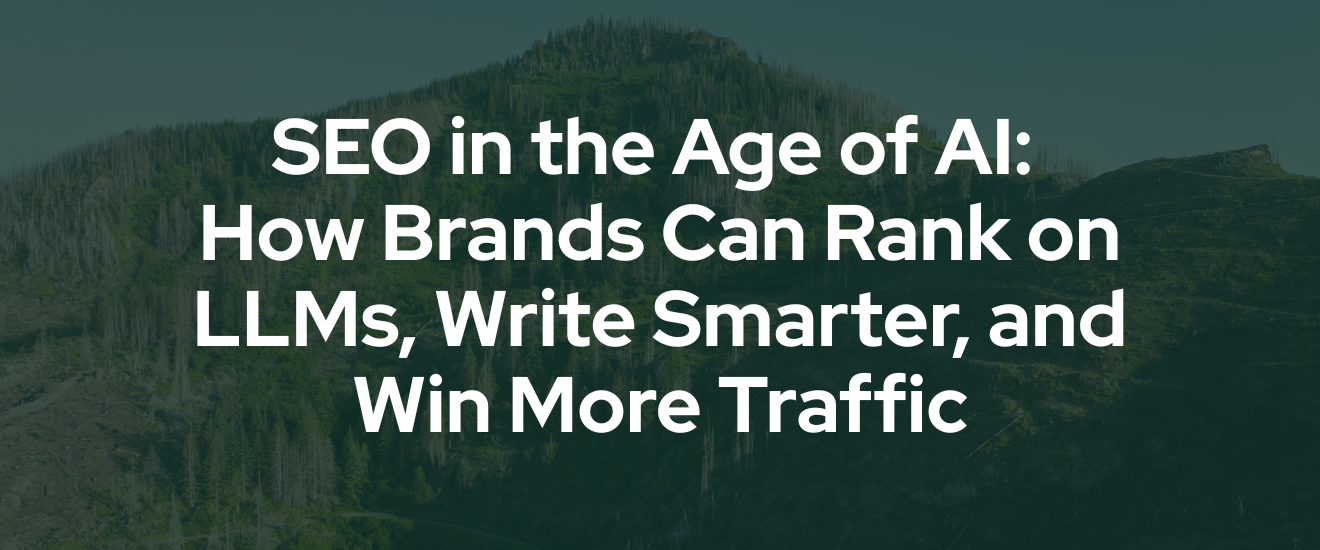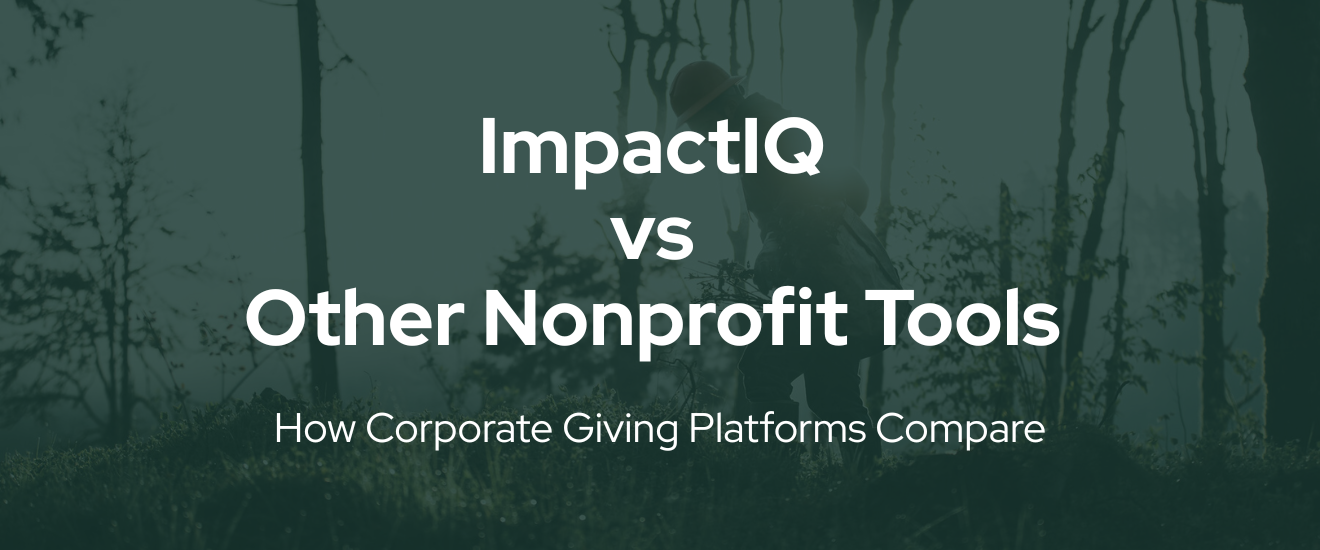SEO in the Age of AI: How Brands Can Rank on LLMs, Write Smarter, and Win More Traffic
A complete guide to AI-powered search, content strategy, and discoverability for 2025 and beyond
Search has changed. Google isn’t just ten blue links anymore—and tools like ChatGPT, Perplexity, Claude, and others are now acting as answer engines, not just search engines.
The rise of large language models (LLMs) is reshaping how people discover brands, ask questions, and make decisions.
So what does that mean for your SEO strategy?
In this guide, we’ll break down how to future-proof your brand’s search visibility in the age of AI.
You’ll learn how to rank in LLMs, how to use AI tools for smarter content creation, and why SEO fundamentals still matter more than ever.
Why AI Is Changing Search (But Not Killing SEO)
AI tools like ChatGPT, Claude, and Google’s SGE aren’t replacing search, they’re changing the format.
Instead of scrolling through links, users now get a direct answer. But those answers still need to come from somewhere.
In many cases, that “somewhere” is your blog.
LLMs are trained on millions of web pages. If your content is helpful, specific, and well-structured, it can influence what these models surface—both in AI answers and chat-style tools.
This is sometimes called LLM seeding—and it’s now a key part of long-term SEO.
What Is LLM Seeding (and Why Should You Care)?
LLM seeding means publishing high-quality content that’s likely to be used as a source for AI models like ChatGPT, Claude, Perplexity, or Gemini.
Why it matters:
- AI tools often don’t cite sources, but your content can shape the answer
- If your brand gets mentioned (even indirectly), users may search for you after
- LLMs reward clear, helpful, and well-structured content—just like good SEO
This is why AI-era SEO is still content-first. If you’re a sustainable brand sharing verified, specific impact data and helpful product guidance, your blog can feed LLMs, rank in AI-generated summaries, and win long-tail traffic.
How to Optimize for AI Search Tools and LLMs
1. Write Topic-First, Not Just Keyword-First
While traditional SEO still cares about keywords, LLMs prioritize helpfulness and depth.
Instead of writing only to hit keywords like “refillable deodorant,” aim to answer complete user questions, like:
- “How do refillable deodorants work?”
- “What’s the most sustainable option for deodorant?”
- “What’s the difference between compostable vs recyclable packaging?”
Action tip: Use tools like AlsoAsked, AnswerThePublic, or Google’s People Also Ask to map related search queries.
2. Focus on Clear, Structured, Skimmable Content
LLMs favor content that’s easy to extract from. Use:
- Subheadings (H2, H3) with clear intent
- Bullet points and numbered lists
- Short paragraphs and bolded key phrases
- Clear intros and conclusions that summarize what was covered
Helpful content = easier for LLMs to use = more likely to be surfaced in AI answers.
3. Avoid AI-Sounding Language
Ironically, writing for AI doesn’t mean sounding like AI. LLMs are trained to filter out robotic or templated content.
Avoid:
- Overused sentence structures (e.g. “X is more than Y—it’s Z”)
- Empty claims without data
- Overly generic intros
Instead:
- Use natural tone, like you’re explaining to a curious reader
- Provide specific examples, stats, and context
- Be opinionated when relevant (especially for product comparisons or mission-led content)
4. Include Fresh, Verifiable Information
AI tools increasingly prioritize sources that are:
✅ Recent
✅ Credible
✅ Specific
✅ Regionally relevant
If your brand partners with a tree planting org or removes plastic from the ocean, don’t bury that info—make it a blog post.
Verified, fresh data is LLM gold.
Great blog examples to write:
- “Where Our Customers Helped Remove Ocean Plastic in 2025”
- “How Many Trees We Planted in Michigan (and Why It Matters)”
- “The Real Impact of Our Refillable Deodorant in the Past 12 Months”
How to Use AI Tools to Write SEO Content (Without Getting Penalized)
AI isn’t just changing search—it can also help you create better SEO content, faster. But to do it well, you need to stay intentional.
Use AI to:
✅ Generate blog post outlines
✅ Turn lists into paragraph copy
✅ Rephrase existing content for skimmability
✅ Suggest title tags and meta descriptions
✅ Explore adjacent keyword opportunities
✅ Check if your writing sounds robotic or repetitive
Don’t use AI to:
🚫 Write entire blogs without editing
🚫 Copy/paste product descriptions across your site
🚫 Replace your brand’s voice with generic templates
🚫 Fake expertise, credentials, or impact data
AI-Friendly Tools for Smarter SEO
Here are tools that help you identify SEO opportunities and create high-performing content faster:
ChatGPT + Web Search - Brainstorming, summaries, content generation, research
SurferSEO - SEO scoring, on-page optimization, AI-guided outlines
Clearscope - Content grading, keyword coverage, top SERP competitors
AlsoAsked - Mapping question-based search intent
Ahrefs / SEMrush - Deep keyword research, link tracking, gap analysis
Perplexity AI - Up-to-date research summaries with cited sources
What Still Matters in SEO (With or Without AI)
✅ Consistency: One blog per month is better than one per quarter
✅ Topical authority: Write multiple blogs per topic to signal expertise
✅ Internal linking: Build content clusters that point to each other
✅ Brand mentions: Work to get linked or mentioned across blogs, Reddit, PR
✅ Real impact: Verified data = more unique content = more trust from users and machines
Final Thoughts
SEO is not dead. But it is evolving.
LLMs like ChatGPT and Perplexity are now a critical part of the search journey. That means writing well-structured, helpful content that feeds those models is one of the smartest long-term marketing moves a brand can make.
At Ecodrive, we’re helping purpose-led businesses do just that—by turning real-world impact into verifiable, rankable content. Whether you plant trees, clean oceans, or recover food waste, your verified sustainability efforts can become the stories that LLMs surface, readers trust, and customers act on.












